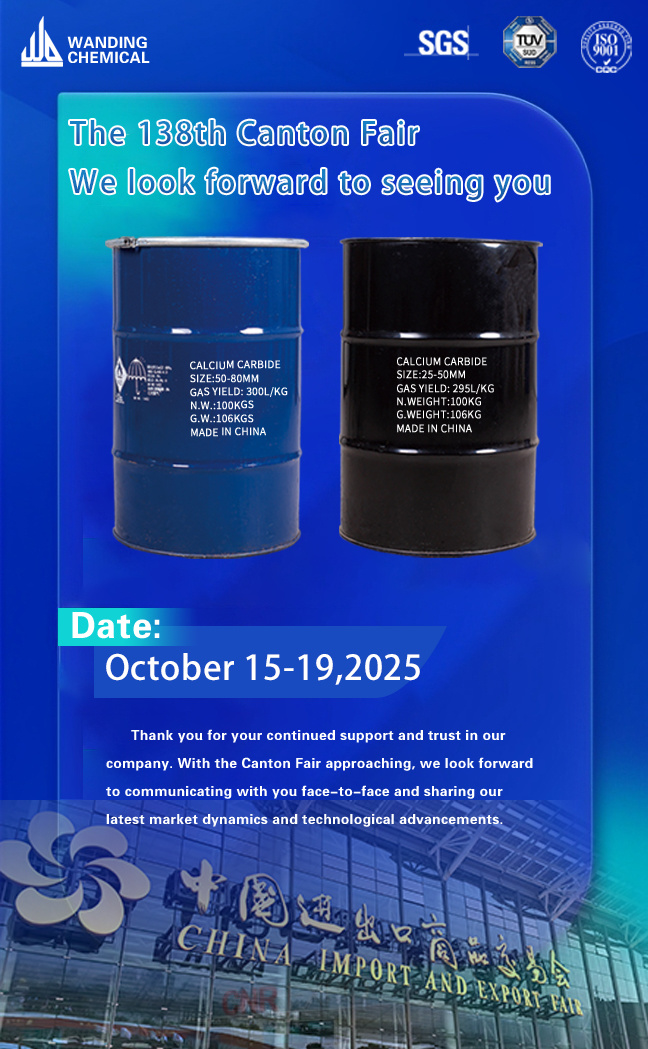Understanding the Chemical Makeup of Calcium Carbide in Metallurgy
Release Time:
2025-02-21
Calcium carbide (CaC₂) is an intriguing chemical compound that plays a crucial role in various industrial applications, particularly in the metallurgy and energy sectors. Its primary significance lies in its use as a precursor for the production of acetylene gas, which is widely utilized for welding and cutting metals. Additionally, calcium carbide serves as a key component in the manufacture of c
Calcium carbide (CaC₂) is an intriguing chemical compound that plays a crucial role in various industrial applications, particularly in the metallurgy and energy sectors. Its primary significance lies in its use as a precursor for the production of acetylene gas, which is widely utilized for welding and cutting metals. Additionally, calcium carbide serves as a key component in the manufacture of chemicals and fertilizers.
The chemical formula for calcium carbide is represented as CaC₂, indicating that each molecule consists of one calcium atom (Ca) and two carbon atoms (C). This composition is essential for its unique reactivity, particularly when calcium carbide comes into contact with water. The reaction produces acetylene gas and calcium hydroxide, a process that is not only fascinating from a chemical perspective but also vital for various applications in industries ranging from metalworking to agriculture.
In the metallurgy sector, calcium carbide's application extends beyond simply generating acetylene gas. It is also used as a reducing agent in the production of ferroalloys and other metals. Its ability to react with oxygen makes it an effective agent for removing impurities in molten metal, thus enhancing the quality of the final product. This attribute is especially beneficial in processes where high purity levels are necessary, such as in the fabrication of steel and other alloys.
Furthermore, in the context of energy production, calcium carbide's role is evolving with advancements in technology. Research is ongoing into its potential use in energy storage solutions and as a source of carbon for various reactions in fuel cells. As industries seek more sustainable methods of production, the utility of compounds like calcium carbide is being re-evaluated to optimize energy efficiency and reduce environmental impact.
Understanding the chemical properties and applications of calcium carbide (CaC₂) is essential for professionals in the metallurgy and non-metallic minerals sectors. Whether you are involved in manufacturing, research, or application development, having a solid grasp of this compound's functionality and reactivity can greatly enhance operational efficiency and product quality.
In conclusion, the importance of calcium carbide in metallurgical processes cannot be overstated. Its versatile applications make it a vital chemical in industries that require precision and quality. As research and technology evolve, the potential uses for calcium carbide will likely expand, reinforcing its significance in modern industrial practices. For those working within the non-metallic minerals sector, staying informed about such compounds is key to maintaining a competitive edge in the market.
The chemical formula for calcium carbide is represented as CaC₂, indicating that each molecule consists of one calcium atom (Ca) and two carbon atoms (C). This composition is essential for its unique reactivity, particularly when calcium carbide comes into contact with water. The reaction produces acetylene gas and calcium hydroxide, a process that is not only fascinating from a chemical perspective but also vital for various applications in industries ranging from metalworking to agriculture.
In the metallurgy sector, calcium carbide's application extends beyond simply generating acetylene gas. It is also used as a reducing agent in the production of ferroalloys and other metals. Its ability to react with oxygen makes it an effective agent for removing impurities in molten metal, thus enhancing the quality of the final product. This attribute is especially beneficial in processes where high purity levels are necessary, such as in the fabrication of steel and other alloys.
Furthermore, in the context of energy production, calcium carbide's role is evolving with advancements in technology. Research is ongoing into its potential use in energy storage solutions and as a source of carbon for various reactions in fuel cells. As industries seek more sustainable methods of production, the utility of compounds like calcium carbide is being re-evaluated to optimize energy efficiency and reduce environmental impact.
Understanding the chemical properties and applications of calcium carbide (CaC₂) is essential for professionals in the metallurgy and non-metallic minerals sectors. Whether you are involved in manufacturing, research, or application development, having a solid grasp of this compound's functionality and reactivity can greatly enhance operational efficiency and product quality.
In conclusion, the importance of calcium carbide in metallurgical processes cannot be overstated. Its versatile applications make it a vital chemical in industries that require precision and quality. As research and technology evolve, the potential uses for calcium carbide will likely expand, reinforcing its significance in modern industrial practices. For those working within the non-metallic minerals sector, staying informed about such compounds is key to maintaining a competitive edge in the market.
News Hotspot





















